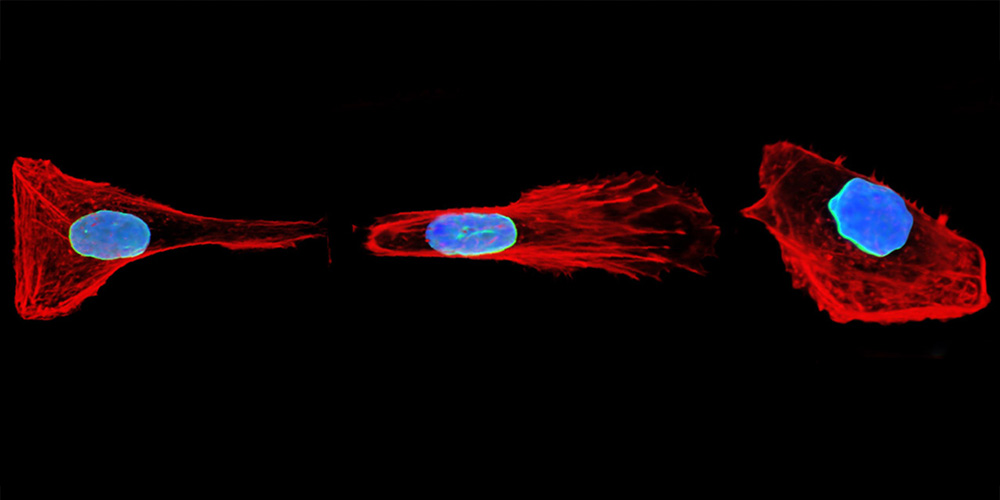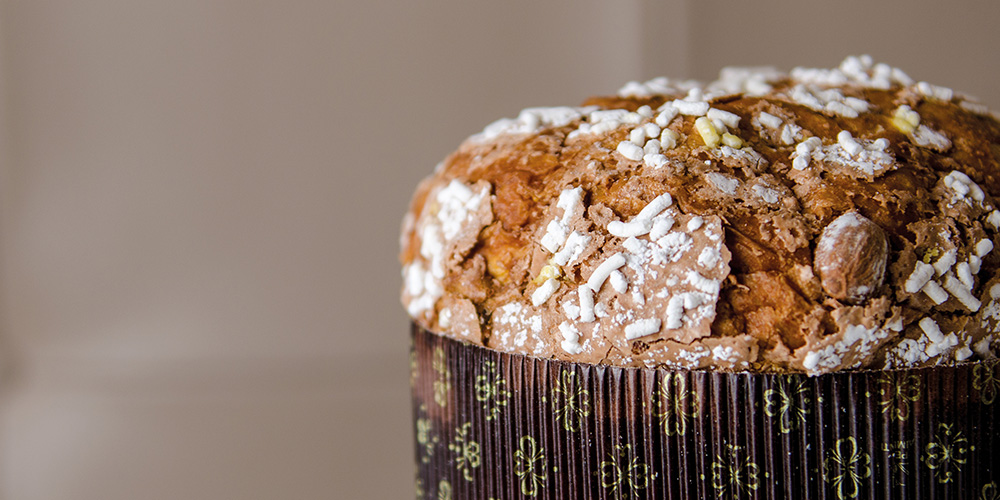Cellular memory: The clever strategy cells use to move through narrow environments
In wound healing, immune response, and cancer metastasis, cells migrate through the body – often squeezing through narrow, confined spaces. Together with experimental collaborators, Prof. Dr. David Brückner at the University of Basel has discovered that cells possess a kind of memory: they can “remember” how they previously navigated such constrictions. This allows them to move more quickly and efficiently through complex tissues.
26 August 2025 | Katrin Bühler
The human body is composed of trillions of cells. Most of them, such as skin cells, remain in place throughout their lifespan. But there are some exceptions: embryonic cells, immune cells, and those involved in wound healing travel through the body. Cancer cells also share this ability, spreading from the primary tumor to form metastases in distant regions. To move from one place to another, cells must squeeze through narrow gaps in the tissue – often smaller than the cells themselves. This requires them to change shape, a process that consumes both time and energy.
Professor David Brückner at the Biozentrum of the University of Basel and researchers led by Prof. Sylvain Gabriele from the University of Mons in Belgium have discovered that migrating cells maintain a mechanical memory. They can “remember” the shape they adopted when passing through a constriction. The memory allows them to retain that shape instead of reshaping each time they encounter an unconfined space, enabling them to move faster and more efficiently in complex environments. The study, published in Nature Physics, sheds light on the biophysical mechanisms underlying this behavior. As a theoretical physicist, Brückner developed a mathematical model describing the dynamics of cell migration.
Changing shape
The researchers studied the behavior of individual cells within specially designed dumbbell-shaped micropatterns on a chip: two small wells in the shape of a square connected by a narrow channel or “bridge” mimicking tight tissue spaces. “Cells use protrusions – microscopic arm-like extensions – to move in these structures,” explains Brückner. “Cancer cells are particularly mobile, constantly migrating back and forth across the bridge.” During confined migration, cells switch between two distinct shapes: elongated and compacted morphologies.
When a cell enters the confined bridge, two protrusions pull in opposite directions. So, at first, the cell explores its options and stretches out. The longer it remains confined, the more likely it is to switch into the compact shape. “In this state, the cell has just a single guiding protrusion, dragging its body like a sack behind,” says first author of the study, Yohalie Kalukula from the University of Mons. “The cell uses its energy to move in one direction.”
Compact shape even after leaving confinement
Surprisingly, most cells that have been confined for an extended period retain their compact shape even after leaving the narrow bridge. This makes them better prepared for the next constriction. “Apparently, the cells remember that they have already passed through narrow spaces and anticipate more ahead, so they stay compact,” explains Kalukula. “However, in some cases, the cells return to their elongated shape. Presumably, staying compact and moving in a single direction is not always advantageous in real tissue environments, as it increases the risk of hitting dead ends and getting stuck.”
Memory effects
The researchers have revealed that this mechanical memory is encoded in the organization of the cytoskeleton, specifically the actin cortex, which determines the cell’s shape and structural integrity. When cells are confined for long periods, they remodel their actin cortex. This structure becomes thicker and more robust, thus enabling the cell to maintain its compact shape even in unconfined environments. “But remodeling the actin cortex takes time — that’s what gives rise to this memory effect,” says Brückner.
The study’s findings suggest that mechanical memory helps migrating cells navigate complex environments more efficiently. This could be beneficial in processes such as wound healing and immune defense. However, this memory effect may also have a downside: it could help tumor cells spread more rapidly throughout the body.
Original publication
Yohalie Kalukula, Marine Luciano, Gleb Simanov, Guillaume Charras, David B. Brückner and Sylvain Gabriele.
The actin cortex acts as a mechanical memory of morphology in confined migrating cells.
Nature Physics (2025), doi: 10.1038/s41567-025-02980-z


